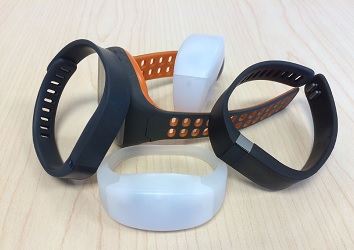How Attendees Use Technology to Interact at Events

As an event organizer or planner, your main goal is to keep attendees informed and engaged throughout the show. The use of technology at events has grown tremendously and varies greatly for different industries because each may have certain technology requirements. For example, banking requires secure software, and vendors would have demos of the technology they offer. Another example is the demonstration of underwater technology for commercial divers. The type of technology event attendees are comfortable using ultimately depends on the tech tools they use in their professional lives.
Wearable technology enables you to capture valuable attendee data at your events.
Attendees’ tech-based interaction at events will be based on their individual personalities.
“Wearables” allow us to take our focus off technology and on to the main reason for attending live events—connecting with other people.
Whether your association’s focus is on banking, diving or another industry, your attendees’ tech-based interaction will also depend on their individual personalities. Therefore, how individuals use technology both personally and professionally will determine how they interact throughout the course of your event. So, how are event organizers and attendees using technology to interact with others? Through the use of social media, live video streaming, mobile apps and wearables.
Event attendees are using wearables at events
Event speakers continue to battle with tablet and smartphone screens for attendees’ attention. According to Beth Ziesenis, author and founder of Your Nerdy Best Friend, “When you look at event technology, one of the challenges that a wearable will help with is eliminating time.” Today, many people spend too much time digging for our smartphones seeking information we require immediately. With wearables, you have the ability to connect and access information quickly and efficiently, and all from the device that’s easy to locate.
An article by Meetings & Conventions also discussed the use of wearables and how they may soon eliminate the need for a smartphone by allowing us to take our focus off technology and back on to what events are all about—connecting with people in our industry and others who share our interests.

With the help of fitness wearables like FitBit and Jawbone, attendees can also be motivated to become more physically active during events and conferences. This is where event organizers have the opportunity to use fitness wearables to their advantage by allowing attendees to become more engaged.
“I’ve seen numerous step and exercise challenges. The people who have the most steps get the most points. You have the ability to turn this into a competition and get people more active,” Ziesenis added.
What about Google Glass? Ziesenis echoed others’ opinions that it is officially dead, but it was a good step in terms of breaking into a more consumer audience with an augmented reality tool. However, augmented reality and virtual reality are not a main part of our lives … yet.
How event organizers are able to measure attendee interaction
One of the largest benefits of using technology at events is the ability to capture mobility and interaction data. In an example from eMarketer, businesses are using customer information collected from wearables, such as the Apple Watch, to improve the customer experience.
“This method of connecting with your association’s members can help you discover how to improve your event experience for years to come,” said Naylor Vice President of Association Relations Charles Popper. “Wearables open up the opportunity to collect data and insights from another device, allowing you to discover what your members want directly from their actions, just as you are able to see what information is important to them when evaluating the analytics of your website, email, mobile app and more.”
Ziesenis stated, “There are a whole series of tools called iBeacons and Bluetooth Low Energies (BLEs), or location-based tools, that measure the activity of event attendees.” Although Apple introduced them, you don’t need Apple products to use iBeacons.
And you can still measure attendee interaction over WiFi. “This gives valuable data to groups about what’s happening at their event,” said Ziesenis. New event apps take advantage of this type of technology, allowing individuals to locate their meetings, relevant booths, prospects and more. Attendee mobility and interaction data collected from wearables are changing the way event planners and organizers are arranging their events, to both improve the attendee’s experience and their business goals.
Live video streaming is booming
Meerkat made its debut a few months ago. Shortly after, Periscope became just as well-known. Both of these live video streaming platforms are making their way into live events.
For event speakers, this is both an opportunity and challenge. Attendees now have the ability to broadcast events to a wider audience—spreading the buzz of a great event. They can share these sessions with their Twitter followers, which will then bring more attention to your session at the event and perhaps encourage more engagement and participation in the future. However, the challenge is that it’s a leak event organizers can’t control. For example, the recent boxing match between Floyd Mayweather and Manny Pacquiao cost fans $100 to view. People bought it, set up the live video stream and allowed many more viewers to be able to see the fight without paying.

Although you cannot fully control how your event’s attendees use live video streaming, you can encourage live streaming to interact with others in your industry, which will in turn promote the excitement of your event to potential and future attendees. For example, by encouraging attendees to live stream a session or an exercise challenge, they are advertising how much they are enjoying your event to others in your industry at no cost to you. This can motivate individuals to think about attending your association’s next event or perhaps becoming a member. On the flip side, at home viewers may be dissuaded from attending your event next year if they know it will be live streamed.
Social media continues to be the biggest trend during events
Within event apps, social media integration is becoming a standard way of connecting with individuals during an event, trade show or conference.
Most event apps offer the ability to share and connect directly through the app, as well as communicate through the event app’s news feed. Therefore, it’s important to integrate the social media platforms that are most popular with your members and attendees in your association’s event app. This will encourage and increase interaction among attendees and your event as a whole.
Conclusion
As you plan your next annual conference or trade show, stay up-to-date about how individuals are using technology to interact with their surroundings. Event technology has the potential to be an important source of information that helps associations understand how attendees are using technology to navigate their event experience, and how their events should adapt to that behavior.
How has your association seen attendees use technology to interact with other individuals and with the event as a whole? Provide your feedback in the comments below.
Brianna Lawson is an online marketing specialist at Naylor Association Solutions.

